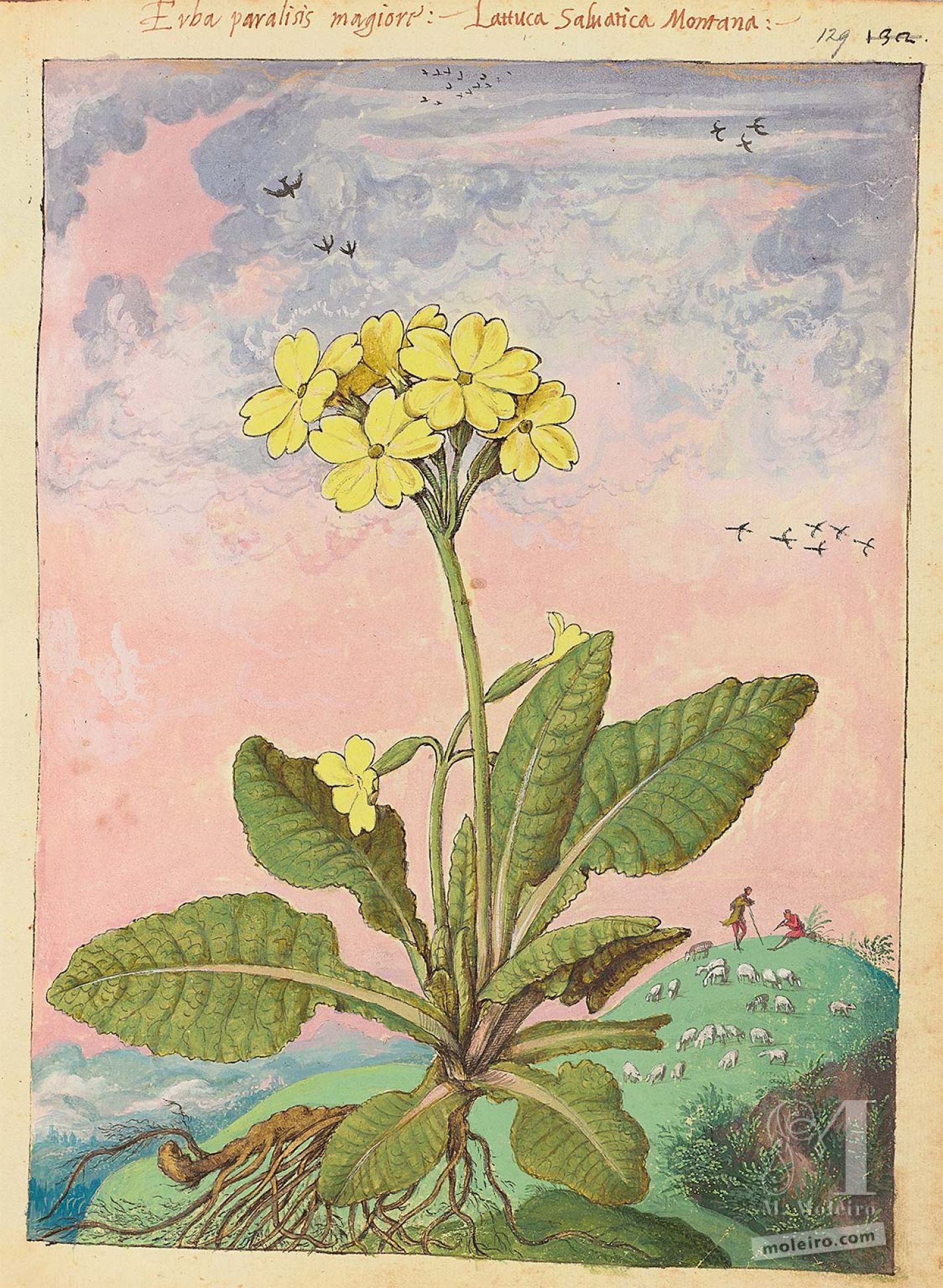"There are two plants, only slightly different from each other, which grow in spring, with very crinkled leaves rather like those of the teasel, whitish flowers in one and yellow in the other, rounded and with toothed edges, called by many the flowers of spring and by others palsy plants. Several modern people use one or the other, regardless of which, for pain in the joints. Their roots, according to what is said, are cooked and then the decoction is drunk as beneficial for obstructions of the kidney and bladder. The juice of the plant is given to drink or applied externally as a poultice on fractures and dislocations of the bones. Women have the habit of frequently washing their face with the juice of the flowers, because it smoothes out the skin and removes every blemish. Both plants have a root shorter than a finger, and thinner than the little finger; from this grow many other thin and scented rootlets. The one with the whitish flowers and no stem grows in woods and in the open in rocky places, close to thickets; the other one, which has yellow flowers and a stem, grows in the meadows of high mountains." (f. 127v)

"There are two plants, only slightly different from each other, which grow in spring, with very crinkled leaves rather like those of the teasel, whitish flowers in one and yellow in the other, rounded and with toothed edges, called by many the flowers of spring and by others palsy plants. Several modern people use one or the other, regardless of which, for pain in the joints. Their roots, according to what is said, are cooked and then the decoction is drunk as beneficial for obstructions of the kidney and bladder. The juice of the plant is given to drink or applied externally as a poultice on fractures and dislocations of the bones. Women have the habit of frequently washing their face with the juice of the flowers, because it smoothes out the skin and removes every blemish. Both plants have a root shorter than a finger, and thinner than the little finger; from this grow many other thin and scented rootlets. The one with the whitish flowers and no stem grows in woods and in the open in rocky places, close to thickets; the other one, which has yellow flowers and a stem, grows in the meadows of high mountains." (f. 127v)